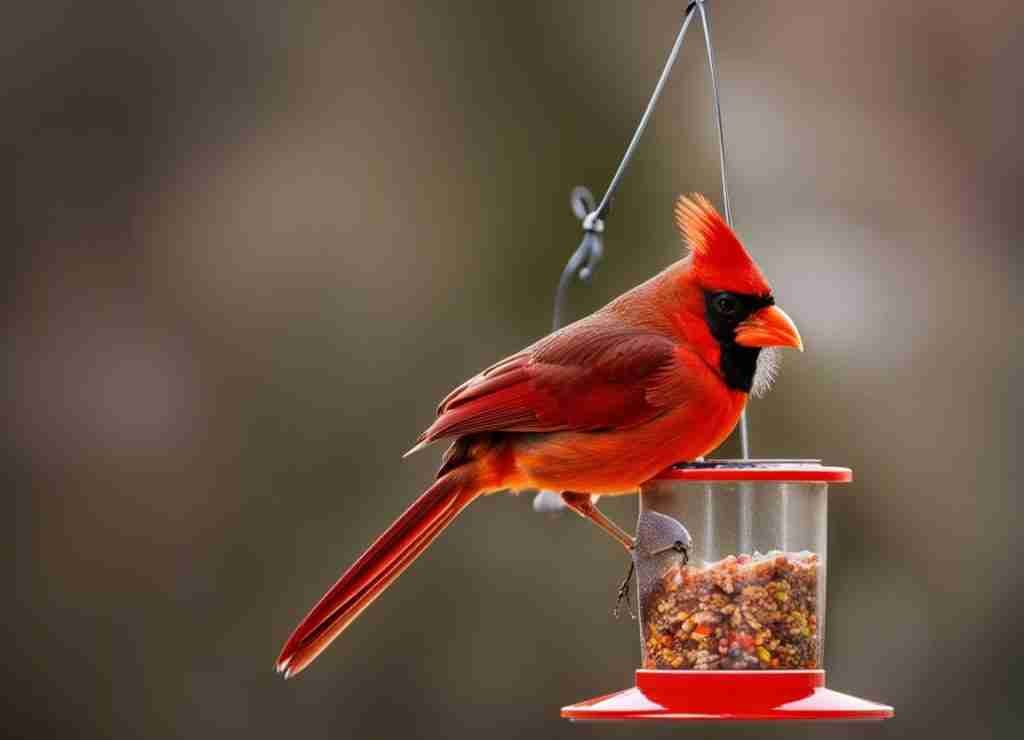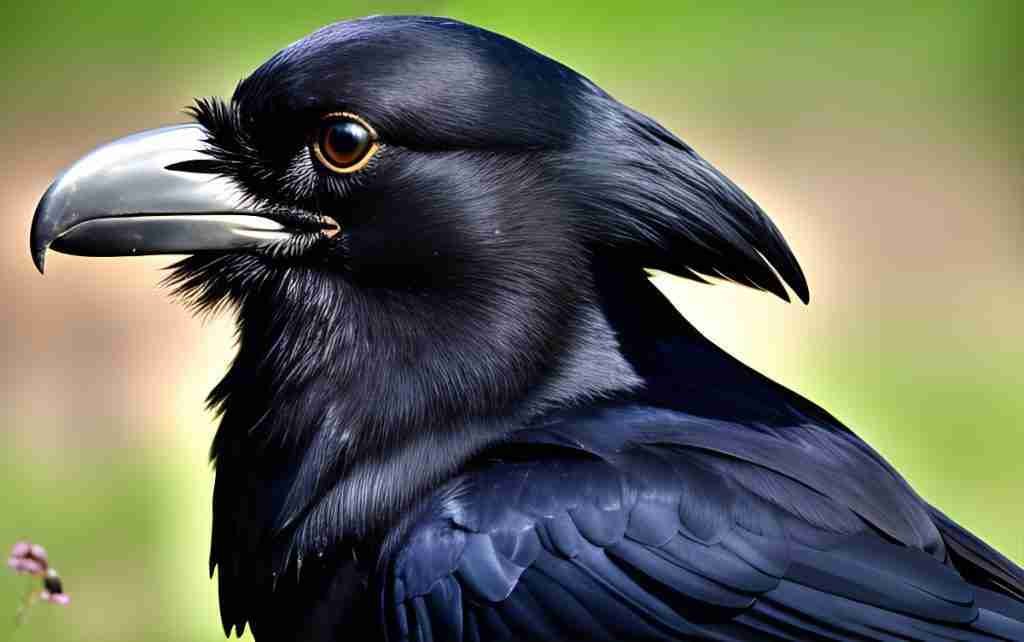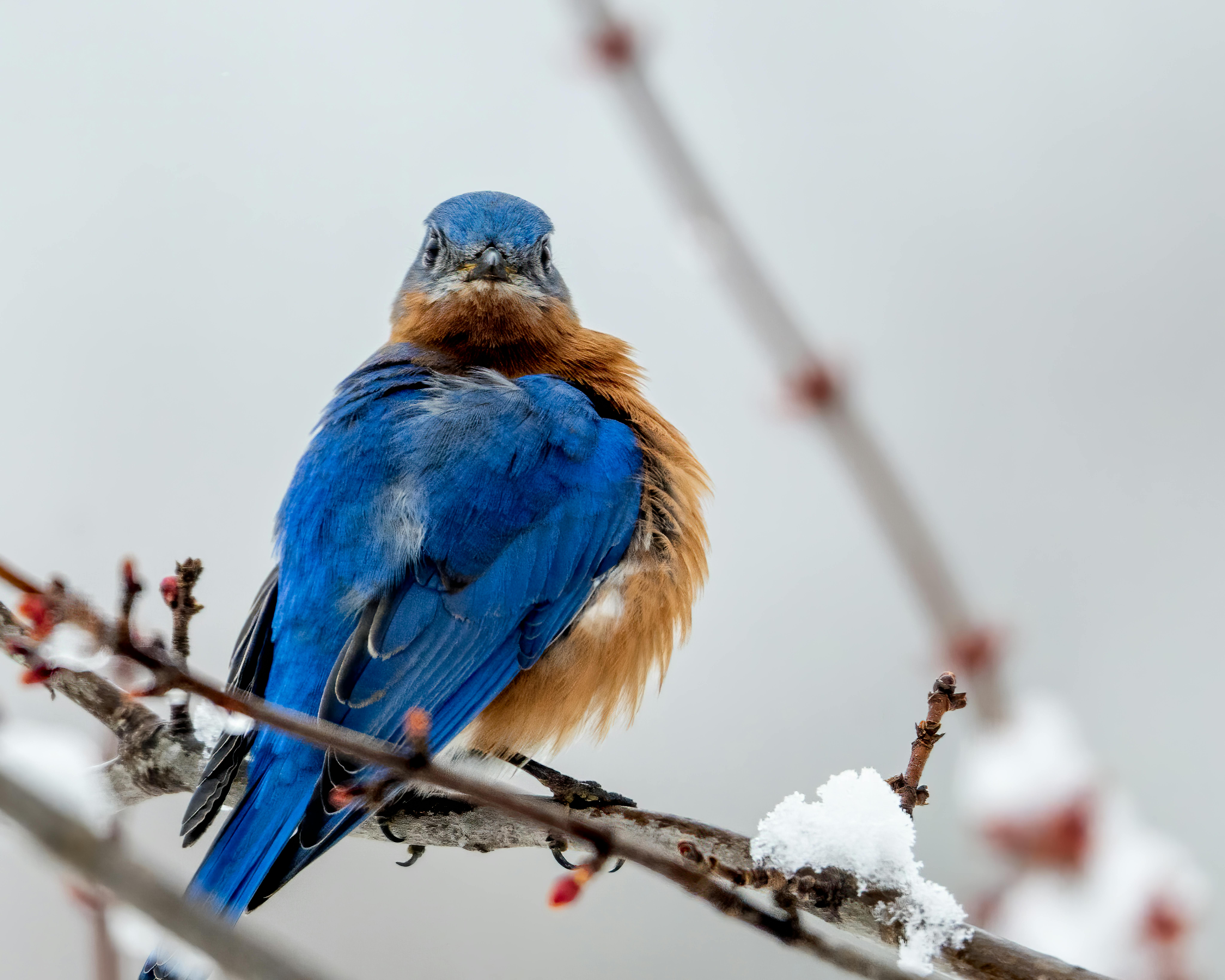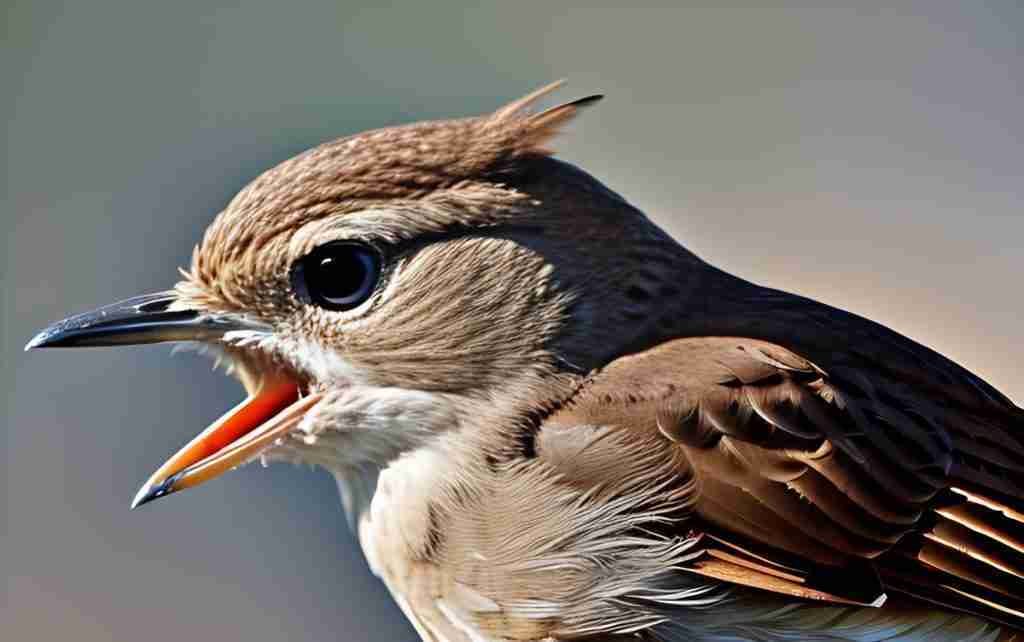Introduction
Have you ever wondered about the secret lives of cardinals and their fascinating mating habits? In this article, we will take a closer look at these elusive birds and unveil the intricate details of their courtship rituals.
From their vibrant feathers to their melodious songs, cardinals have captured the curiosity of bird enthusiasts around the world. Join us as we uncover the hidden world of cardinal romance and explore the frequently asked questions about their unique mating behavior. Get ready to be captivated by the enchanting world of these feathered matchmakers.
Cardinal Mating Season
Duration of the mating season
The mating season for Cardinals typically occurs in the spring, spanning from March to July. This is the time when the cardinals engage in courtship behaviors, breed, and raise their young. The duration of the mating season can be influenced by various factors, including environmental conditions and the availability of resources.
Triggering factors for the mating season
Several factors trigger the onset of the mating season for Cardinals. One significant factor is the increase in daylight hours during the spring months. As the days become longer, it signals to the cardinals that it is time to start breeding. Additionally, the availability of food resources plays a crucial role in determining when the mating season begins. When food sources become plentiful, it provides the necessary nutrition for the cardinals to engage in courtship and reproduction.
Behaviors exhibited during the mating season
During the mating season, Cardinals exhibit a range of behaviors aimed at attracting a suitable mate. These behaviors are often showy and vibrant, reflecting the beauty of these magnificent birds. Male cardinals are known for their melodious singing, which serves as an integral part of their courtship ritual. They sing various songs and calls, showcasing their vocal abilities to allure potential mates. In addition to singing, male cardinals also engage in feather displays and physical gestures such as fluffing their feathers and hopping in a lively manner to catch the attention of females.
Cardinal Courtship Rituals
Singing and calling as a courtship behavior
Singing and calling are crucial courtship behaviors for cardinals. Male cardinals have a wide repertoire of songs and calls, which they use to attract females. They sing throughout the day, especially during the early morning hours when their tunes are more vigorous and distinct. The melodious songs of male cardinals serve as a way to proclaim their presence, establish territory, and demonstrate their fitness to potential mates. The females, in turn, listen to and evaluate the quality of the male’s song when choosing a mate.
Feather displays and physical gestures
Apart from singing, male cardinals employ feather displays and physical gestures to court females. When a male cardinal spots a female of interest, he may fluff up his vibrant red feathers to appear more attractive and prominent. This display showcases his health and vitality, which are desirable traits in a potential mate. Additionally, the male may engage in hopping or wing-flicking movements to capture the attention of the female. These physical gestures serve to communicate their intentions and willingness to engage in the courtship process.
Exchange of food as a courtship behavior
Another intriguing courtship behavior displayed by cardinals involves the exchange of food between the male and female. This behavior is commonly known as “courtship feeding.” The male cardinal will search for food, such as seeds or insects, and present it to the female as an offering. This act demonstrates the male’s ability to provide for the female and potential offspring. If the female accepts the food offering, it signifies her interest and acceptance of the male as a mate.

Pair Bonding and Nest Building
Formation of pair bonds
After successful courtship rituals, Cardinals form strong pair bonds with their chosen mates. These pair bonds typically last throughout the breeding season and may even extend for multiple seasons. The formation of pair bonds involves mutual attraction, compatibility, and shared territorial boundaries. Once a pair bond is established, the male and female Cardinals work together to build and maintain their nest.
Selection of nesting sites
The selection of nesting sites is a crucial step for Cardinals in preparing for reproduction. The female cardinal takes the lead in choosing a suitable nesting location. She seeks out dense vegetation, such as shrubs or trees, which provide protection and camouflage for the nest. Cardinals often select locations with plenty of cover to minimize the risk of predation and disturbance. The nesting sites are carefully chosen to provide a safe and secure environment for raising their offspring.
Building and maintenance of nests
Both the male and female cardinals participate in the building and maintenance of their nests. The nests are typically constructed from twigs, leaves, grass, and other plant materials. The female takes the lead in nest-building, while the male assists by supplying materials and reinforcing the structure. The nests are cup-shaped, with the female carefully weaving the materials together to create a sturdy and comfortable home for their eggs. Both parents continue to maintain the nest during the incubation and nesting period, ensuring it remains in optimal condition for their offspring.
Egg-Laying and Incubation
Number of eggs laid
After the nest is completed, the female cardinal will proceed to lay her eggs. Cardinals typically lay a clutch of 2 to 5 eggs, with an average of 3 or 4 being the most common. The number of eggs laid can vary depending on factors such as the age and health of the female, as well as environmental conditions and availability of resources. Each egg is small, approximately 1 inch in length, and has a pale green or blue color with distinctive markings.
Incubation period
Once all the eggs are laid, the female cardinal takes on the responsibility of incubating them. The incubation period for cardinal eggs lasts approximately 11 to 13 days. During this time, the female sits on the eggs, providing them with warmth and protection. The male cardinal assists with the incubation process by providing food for the female and occasionally taking over the incubation duties, allowing her to take short breaks to feed and stretch her wings.
Incubation duties of both male and female cardinals
Both male and female cardinals play important roles in the incubation of the eggs. While the female predominantly takes on the task of incubating the eggs, the male actively supports her by foraging for food and defending the nest territory. The male’s involvement in incubation duties ensures that the female receives adequate nourishment and protection during this critical period. This division of labor allows the male and female cardinals to work together and increase the chances of successful hatchlings.

Parental Care and Nest Survival
Feeding and protecting the hatchlings
Once the eggs hatch, both male and female cardinals engage in intense parental care. They take turns feeding the hatchlings, bringing them a diet primarily consisting of insects, seeds, and berries. The parents diligently search for food sources and deliver them to the nest, ensuring that their young receive the proper nutrition for healthy growth. Cardinals also protect their nestlings from potential threats, using alarm calls and aggressive behaviors to ward off predators and intruders.
Predation threats and nest survival strategies
Despite the devoted efforts of the cardinal parents, their nests and nestlings face various predation threats. Nest predators, such as snakes, squirrels, and other birds, pose a significant danger to the survival of cardinal nests. To counteract these threats, cardinals employ several strategies to enhance nest survival. They carefully select nest locations that provide natural camouflage and hiding places, making it difficult for predators to spot the nest. Cardinals also use their vibrant red plumage to distract and lure predators away from the nest, protecting their offspring from harm.
Parental care after the nestlings fledge
Once the nestlings reach the fledgling stage and are ready to leave the nest, the parental care of cardinals continues. The parents teach the fledglings essential survival skills, such as foraging for food and identifying potential threats. They guide their young and provide them with food for several weeks until the fledglings are fully independent and capable of fending for themselves. The family bonds remain strong even after the young Cardinals have ventured out on their own, with occasional family gatherings and interactions in the same territory.
Extra-Pair Copulations
Occurrences of extra-pair copulations
While Cardinals are known for their monogamous pair bonds, extra-pair copulations can occur in certain circumstances. Extra-pair copulations involve individuals mating outside of their established pair bonds. Studies have shown that a small percentage of cardinal pairs engage in these extra-pair copulations. However, it is important to note that they are relatively infrequent and do not undermine the overall monogamous nature of cardinal mating habits.
Reasons for engaging in extra-pair copulations
The reasons behind engaging in extra-pair copulations among Cardinals are multifaceted. One possible reason is the pursuit of genetic diversity and the potential benefits it may bring to offspring survival and reproductive success. By engaging in extra-pair copulations, Cardinals increase the genetic variability of their offspring, enhancing their chances of adapting to changing environments and resisting diseases. Additionally, extra-pair copulations may occur due to opportunities arising from territorial disputes or temporary separations between paired individuals.
Consequences and implications of extra-pair copulations
Extra-pair copulations can have both positive and negative consequences for Cardinals. On one hand, they contribute to the genetic resilience and adaptability of the species. By introducing genetic diversity, extra-pair copulations may enhance the overall fitness and survival of offspring. However, engaging in extra-pair copulations also carries risks, such as the potential for social disruptions within established pairs and the potential spread of diseases. Researchers continue to study the complex dynamics of extra-pair copulations to gain further insights into the evolutionary strategies of Cardinals.
Aggression and Territory Defense
Territorial behaviors of male cardinals
Male cardinals are highly territorial and vigorously defend their nesting territories against intruders. They exhibit aggressive behaviors in the form of vocalizations, such as loud and repetitive chirping, to establish their presence and defend their territory. Male cardinals are known to engage in physical confrontations with other males, using their sharp beaks and wings to intimidate and deter intruders. These aggressive displays are intended to protect their nesting sites, resources, and the females within their territory.
Aggressive responses to intruders
When faced with intruders, both male and female cardinals demonstrate aggressive responses to protect their territory and offspring. They emit loud alarm calls and engage in aggressive displays, such as flapping their wings and erecting their crests to appear more threatening. These aggressive responses are intended to warn intruders and deter them from approaching the nest or invading their territory. Cardinals are tenacious in defending their domain, showing persistence until the threat is neutralized or driven away.
Methods of defending their territory
Cardinals employ various methods to defend their territory effectively. In addition to aggressive displays and vocalizations, male cardinals employ visual cues to mark their territory. They defend their territory not just against other cardinals but also against potential threats from other bird species. Cardinals use conspicuous behaviors, such as chasing away trespassers and engaging in physical confrontations, to establish dominance and maintain their exclusive use of resources within their territory. These territorial defense strategies play a crucial role in ensuring the survival and reproductive success of cardinals.
Interspecies Mating and Hybrid Offspring
Instances of interspecies mating with other bird species
While cardinal pairs typically mate within their own species, there have been rare instances of interspecies mating between cardinals and other bird species. Some Cardinals have been observed engaging in hybridization with closely related species, such as the Summer Tanager or the Northern Mockingbird. These interspecies mating events occur infrequently and often result in hybrid offspring with unique characteristics that exhibit traits from both parent species.
Hybrid offspring and their characteristics
The hybrid offspring resulting from interspecies mating display a combination of traits inherited from their cardinal and non-cardinal parent species. These characteristics can include variations in plumage coloration, song patterns, and physical features. Due to the genetic diversity resulting from hybridization, these individuals may possess certain advantages or disadvantages in terms of survival and reproductive success compared to their purebred counterparts.
Survival and reproductive success of hybrid cardinals
The survival and reproductive success of hybrid cardinals largely depend on various factors, including the viability of the hybrid combination, habitat suitability, and genetic adaptability. Some hybrid cardinals may face challenges in finding compatible mates due to differences in song patterns or behavioral cues. However, if the hybrid offspring possess advantageous traits inherited from both parent species, they may exhibit increased adaptability to different environments and potentially higher fitness. Researchers continue to study the consequences and impacts of hybridization in cardinal populations to better understand its long-term effects on the species.
Effects of Environmental Factors on Mating Habits
Impact of climate change on cardinal mating behaviors
Climate change has the potential to impact cardinal mating behaviors in several ways. As temperatures and weather patterns shift, the timing of the mating season may be altered, affecting the synchronization of courtship rituals and breeding cycles. Changes in temperature and habitat availability may also influence the availability of food resources, which could indirectly impact the health and reproductive success of cardinals. Additionally, alterations in vegetation and habitat composition due to climate change may affect the selection of nesting sites, potentially leading to changes in nesting behaviors and nest survival rates.
Habitat loss and its influence on cardinal reproduction
Habitat loss has become a significant concern for cardinal reproduction. With the destruction and fragmentation of natural habitats, cardinals may struggle to find suitable nesting sites and sufficient food resources. The loss of dense vegetation and the clearing of forests disrupts the availability of cover and nesting materials, affecting the reproductive success of cardinals. Similarly, the reduction in suitable habitats can lead to increased competition for limited resources, potentially impacting the overall breeding population.
Availability of resources and its effects on mate selection
The availability of resources plays a vital role in mate selection for cardinals. Suitable habitats with abundant food sources are essential for attracting and maintaining quality mates. Female cardinals tend to select males with access to ample resources, such as abundant food and territory. In environments where resources are scarce or unpredictable, mate selection preferences may shift, favoring individuals with adaptive traits and resource-acquisition abilities. The availability of resources not only affects individual breeding success but can also shape the overall genetic composition of cardinal populations.
Insights from Research Studies
Scientific studies on cardinal mating habits
Scientific studies on cardinal mating habits have provided valuable insights into the behaviors and reproductive strategies of these fascinating birds. Researchers have utilized various techniques, such as field observations, vocalization analyses, genetic analyses, and experimental manipulations, to study cardinal courtship rituals, pair bonding, nesting behaviors, and parental care. These studies have deepened our understanding of the factors influencing mating decisions, the role of environment in shaping reproductive behaviors, and the genetic implications of hybridization.
Techniques used to study cardinal mating behaviors
Researchers employ a range of techniques to study cardinal mating behaviors in the field. Observational studies involve carefully documenting courtship rituals, nest construction, incubation behavior, and parental care. Vocalizations are analyzed using spectrograms and sound recordings to unravel the intricacies of song patterns and their role in mate selection. Genetic analyses, such as DNA sequencing and paternity tests, provide insights into the genetic diversity and paternity patterns within cardinal populations. Experimental manipulations, such as nest removal or playback experiments, allow researchers to investigate the behavioral responses and preferences of cardinals in controlled settings.
Key findings and contributions to avian research
Research on cardinal mating habits has yielded several key findings and made significant contributions to avian research. These studies have demonstrated the importance of vocalizations in mate selection, shed light on the factors influencing pair bond formation and maintenance, and unraveled the complexities of extra-pair copulations in monogamous species. The observations and investigations have also contributed to our understanding of the impacts of environmental factors, including climate change and habitat loss, on mating habits and reproductive success. Overall, the findings from research studies have enriched our knowledge of avian behavior and provided a deeper appreciation for the secret life of Cardinals.


